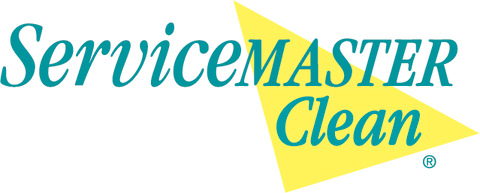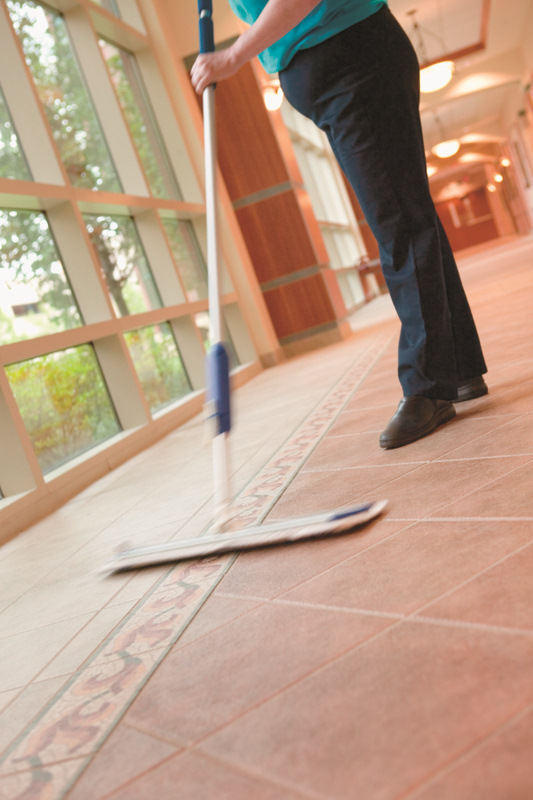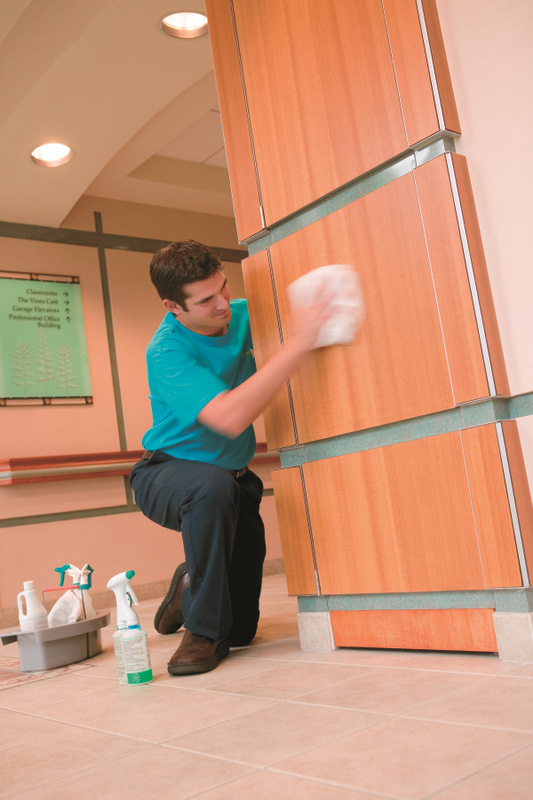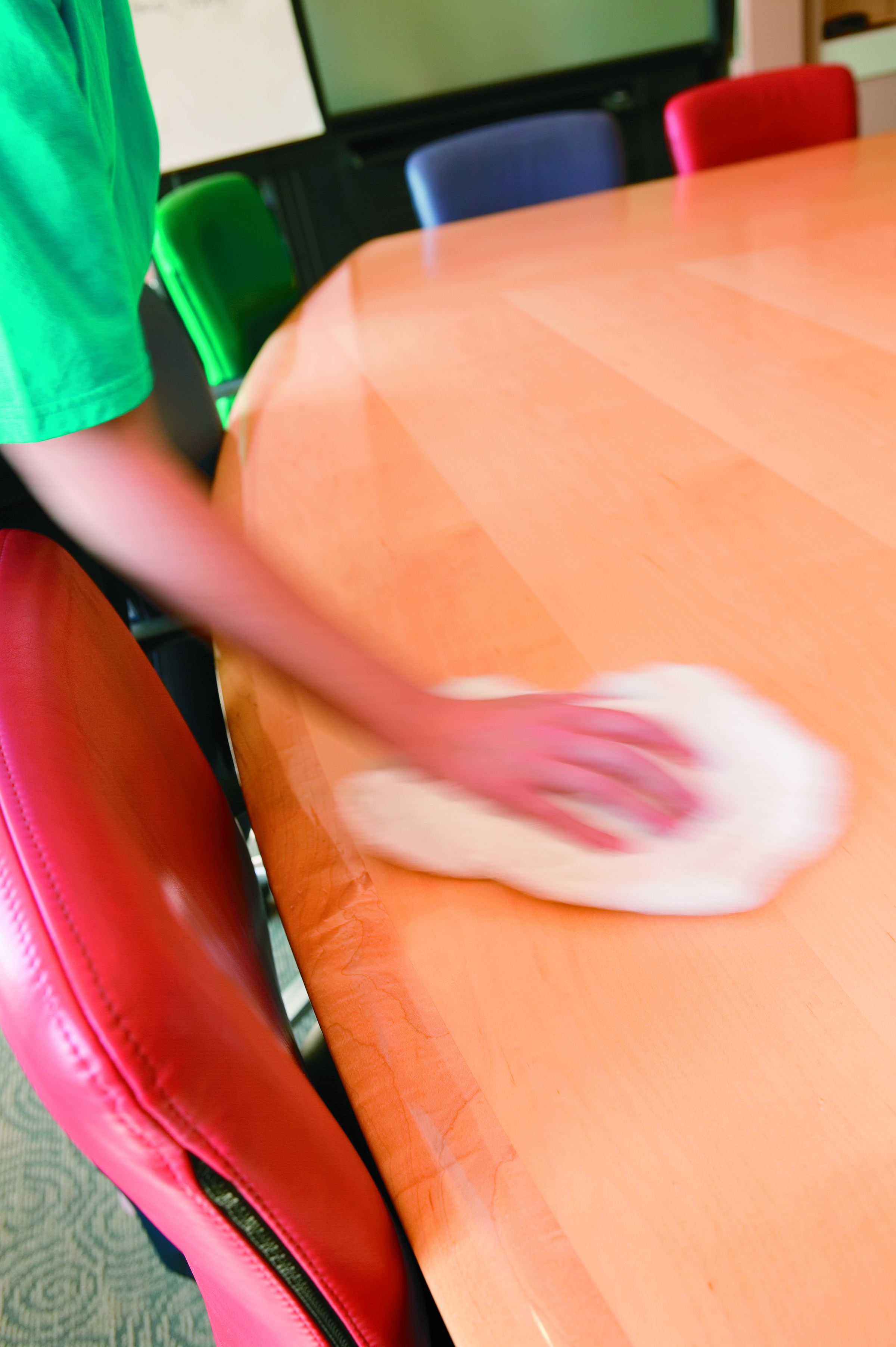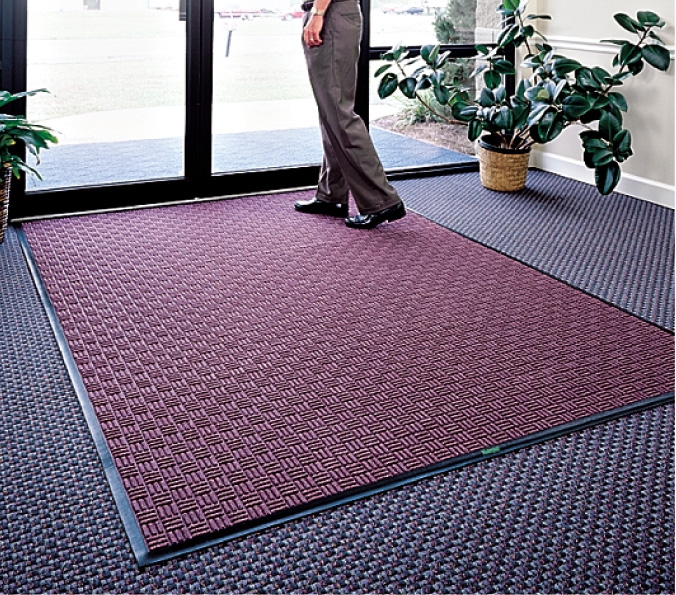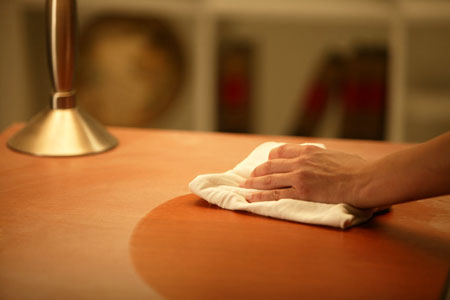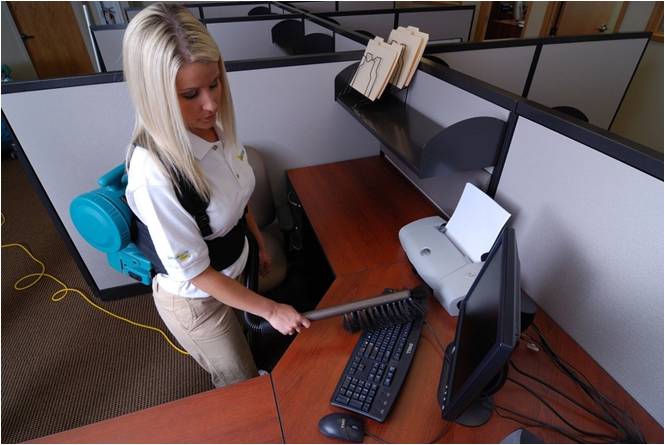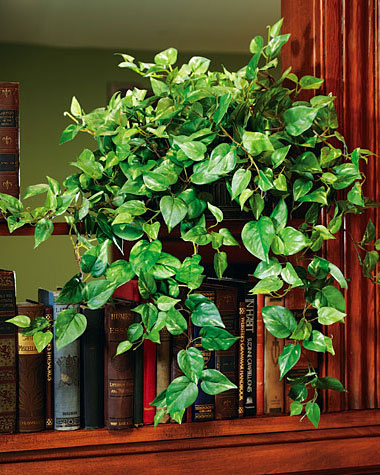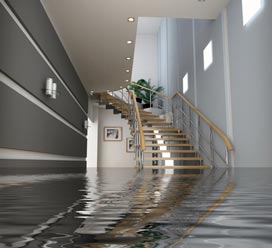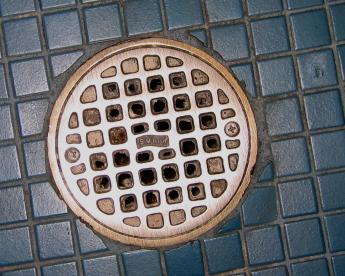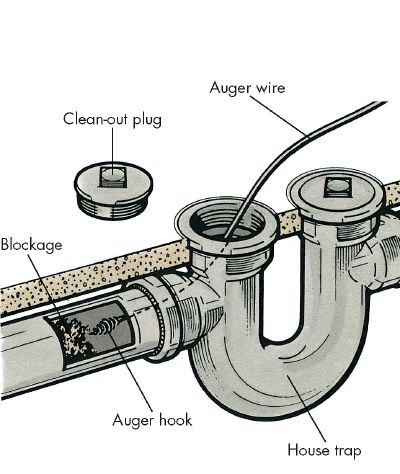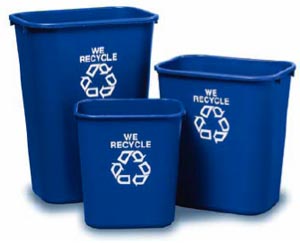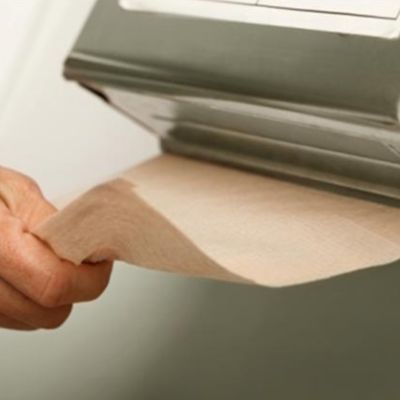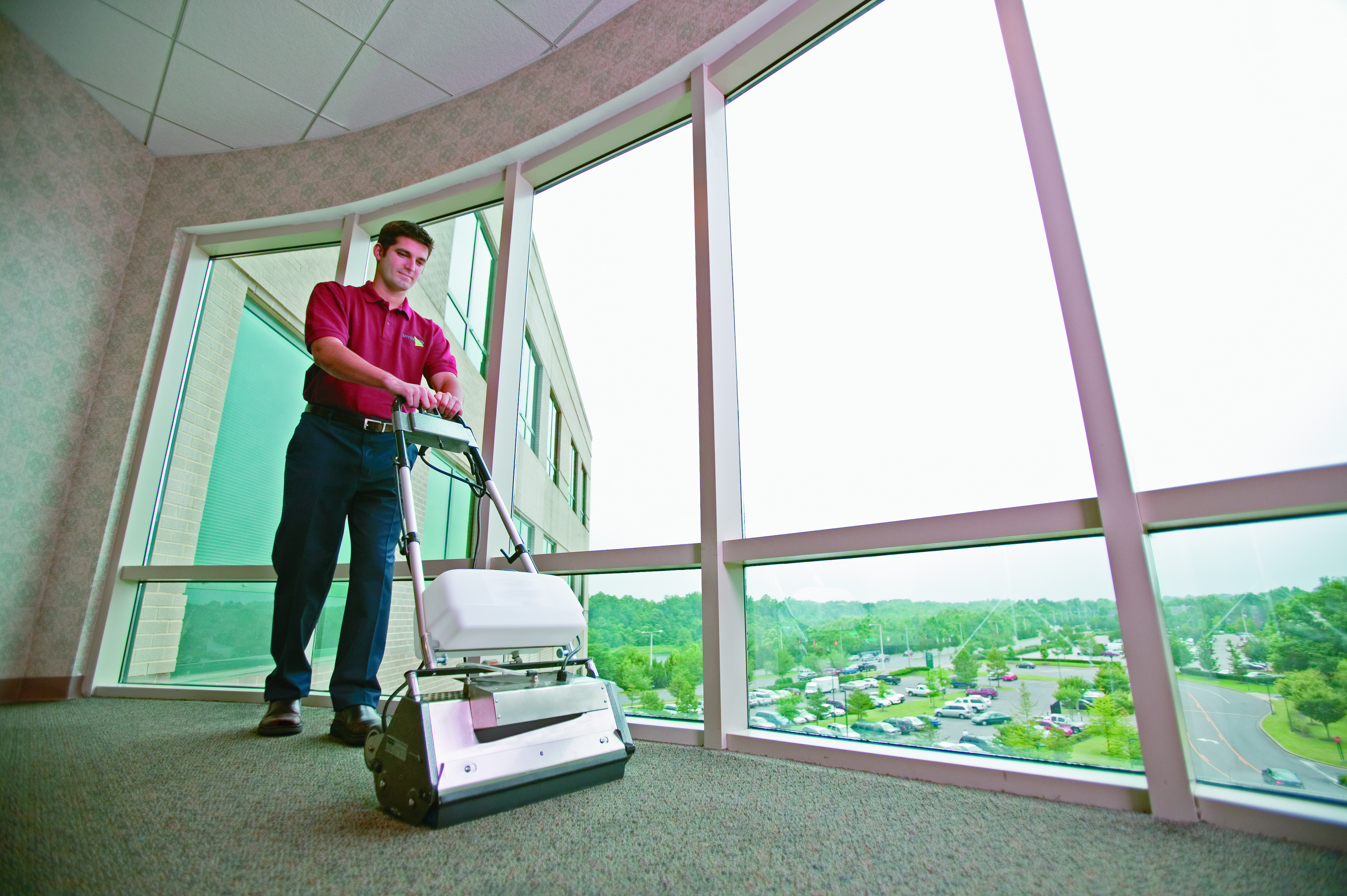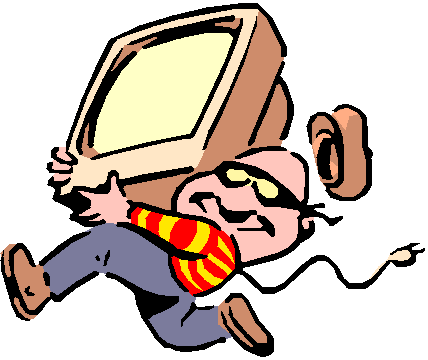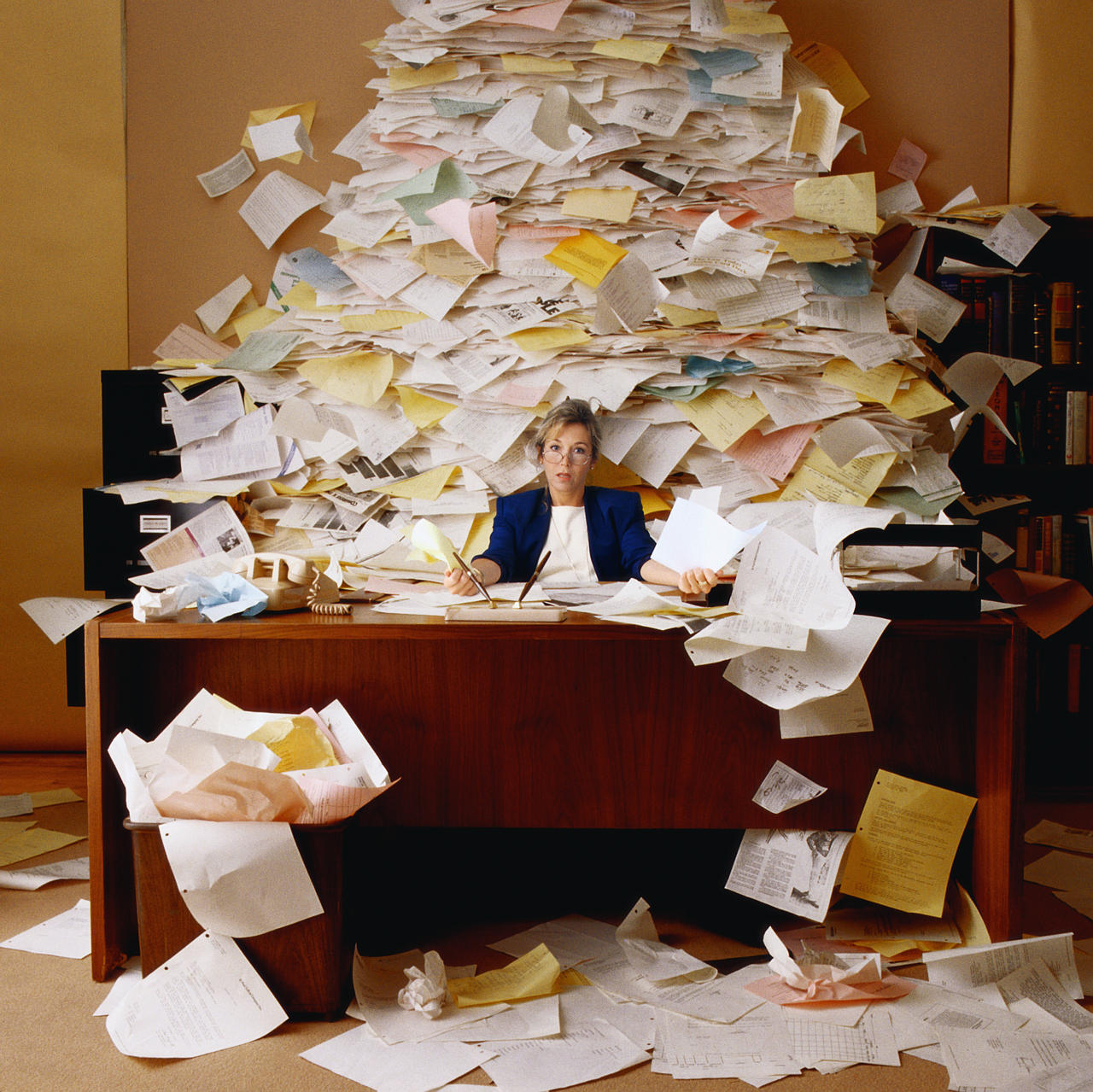
A gathering of random but useful information - some pertaining to cleaning, some to a healthier environment, and a bit focusing on nothing in particular.
Archives
Insurance & Your Cleaing Company
Help Us Help You
Who's Really Cleaning Your Office?
The Life of Carpet
Office Recycling
Why Buy Recycled?
Emergency Response
The Real Source of Restroom Odor
Removing vs. Moving Dirt
Cleaning Artificial Plants
In-House vs. Professional Cleaning
System Cleaning
(Surprising) Facts on Walk-Off Mats
Spring Fall Cleaning
Dirty Paper
Towel Test
October 2011
Feature Article:
Dirty Paper Towel Test
Dirty Paper Towel Test
This month’s clarification topic: the truth behind moping and the “dirty paper towel test.” Occasionally we are confronted with an unhappy customer holding a dirty paper towel in their hand. Usually with a damp towel, the customer reaches down on their floor and scrubs a small area. To the surprise of the customer (but not to us), the towel is now dirty. To this suspicious customer, the guilt of the uncleanly floor now lies on the cleaning company and we are accused of not cleaning their floors. So let me take a few moments to clarify this fallacy.
Mopping hard surface floors is similar to hosing your car off with water. This will remove all loose soil on the surface and make the surface appear cleaner. However, in the example of your vehicle, without a routine scrub (a brush, soap, and elbow grease); the car never becomes truly clean. The same idea applies to your floors; scheduled machine scrubbing is necessary to make the floors truly clean.
 | ||||||
Most businesses have Vinyl Composite Tile (VCT) floors. VCT is typically coated with a few layer of floor finish. This finish is porous and the soil from foot traffic is ground into the wax. Nightly mopping will remove the loose dust and dirt on top of the floor as well as sanitize the surface, but it will not remove the soil that has been worked into the finish. However, when a paper towel is used to scrub a small area on the floor, the pressure used is actually removing soil which is ground into the floor and perhaps some finish as well. The mop does not apply much weight and agitation to the floors. Compare that to getting down on your knees and scrubbing the floor with a paper towel. The difference is significant. Mops are a maintenance tool and should be viewed as nothing more. Giving your floor a machine scrub nightly would not be cost effective for your building maintenance budget. However, daily mopping gives you the look you desire along with the peace-of-mind that the floors are sanitary. Additionally, mopping the floors without a scheduled machine scrub is like hosing your car off every morning and never taking it to the car wash or washing it by hand. Eventually its appearance will diminish.
Spring Fall Cleaning
Since the tradition of Spring Cleaning began when homes and businesses were heated with coal, wood, and kerosene lamps which left behind a layer of soot, dirt, and grease, it is still as important today to continue this practice. However, because of the uniqueness of our Central Valley, in order to maintain and preserve our office and its contents, Fall Cleaning has become just as imperative.
During the spring and summer months, the Central Valley is thriving in agricultural and industrial production. Cars, trucks, and busses continually transport people, commodities, and goods up and down our highways. Smog and dust plague the hot, dry air which becomes virtually stagnant within the San Joaquin Valley. Where does this air and dirt go? The particles in the air find their way inside our homes and businesses on the floors, walls, windows, etc. until we remove them.
So why is it important to spring clean in the fall? The tradition of a deep clean once-a-year is just not enough for our valley residents. Not only is a deep clean aesthetically good, but it’s a healthy benefit as well. Every time a dust-filled carpet is stepped on or an artificial plant is brushed up against, dust particles are released into the air we breathe. Dust particles which irritate the allergies, asthma, and illnesses of customers, employees, and family members.
So what does a fall cleaning consist of? Depending on the office space, fall cleaning is more rigorous then your regular janitorial cleaning. Carpet extraction, hard surface floor scrubbing, wall and window washing, upholstery washing, artificial plants, dusting of bookshelves and equipment, pressure washing sidewalks and entries, replacement of air filters, ceiling fan blades, cleaning of air vents/covers, etc. are all areas within the office often in need of special attention. Not only will your office be rid of health irritants, but your facility will be ready for holiday parties and festivities!
Don’t be overwhelmed with the fall cleaning to-do list. By coordinating with your cleaning company and simply clearing one surface at a time, you can ensure your office will be rid of these harmful particles. So mark your calendar for Fall Cleaning soon! Seize the opportunity to make a difference in your office facility, staff, and customers.
 | ||||||
November 2011
Feature Article:
Spring Fall Cleaning
System Cleaning
Anyone can arrive at an office with a bucket, mop, towel, and a bottle of cleaning chemicals with the intention of cleaning the facility. But how are those supplies used? How exactly is each office, hallway, break room, and restroom cleaned? Does the cleaner begin by vacuuming or by dusting? Which direction do they begin? How would you feel if you saw your cleaner enter your facility with a gallon of bleach? How would you feel if you watched your cleaner mop the restrooms and then mop your office floor? A System Cleaning approach would answer all these questions and much more. System Cleaning is a set of detailed procedures and routines formulated to deliver your office maintenance solutions. A comprehensive cleaning process involves a sequence of routine and scheduled procedures to maintain the proper care of your facilities.
Why is the implementation of a Cleaning System so important? If lacking an organized and purposeful structure, the cleaner would enter their assigned office without any specific order or method. Without a Cleaning System, “sight cleaning” is generally used. This cleaning default involves a defensive cleaner which means cleaning is only done when dirt is visible. Your office may appear relatively clean, but when the heating system turns on and blows the layer of dust off the top of your bookshelf, where does the filth go? Airborne and you, your coworkers and customers will breathe it in. Sight cleaning makes for inconsistent and inefficient building maintenance.
 | ||||||
However, System Cleaning is offensive cleaning. All areas of your office are regularly cleaned based on a daily Task Schedule which orchestrates the routine. Soil and germs are removed as the cleaner follows a specific routine and order of tasks. The benefits are tremendous: spotless and sanitary offices completed efficiently and routinely. This efficiency also equates to cost-savings for you. The more efficient the cleaning is, the more cleaning you get to enjoy for your dollar. Would you rather see your building maintenance budget walking around in your facility unorganized and inefficient, or following a well planned, efficient routine that solves all of your building maintenance needs?
Contact your maintenance provider and request to view your Task Schedule and inquire about the type of cleaning which is assigned to your facility. Anyone can “clean” an office, but without a specific plan in place, the quality of that cleaning may be compromised.
(Surprising) Facts on Walk-Off Mats
A walk-off mat is a simple tool created to help a building or home stay clean and improve the indoor air quality. This carpeted, rubber-backed surface that is situated just inside the entrance of buildings or just outside a home is a seemingly ordinary object. However, a walk-off mat is crucial in preventing excess dirt and grime build up, which release more particles into the air. For a walk-off mat to reach its full efficacy it is best to have a coarse, ribbed surface or plush carpeting that will absorb the particles. An indoor, commercial mat should be at least ten feet in length or two steps on each foot. It should also have a rubber backing with a half inch “nose” around the perimeter to create a non-skid surface that firmly holds to the floor. An outdoor mat should be thicker to withstand the harsher environment and larger debris.
According to the Green Guard Environmental Institute, “The air in our homes, schools and offices can be 2 to 5 times more polluted, and in some cases 100 times more polluted, than outdoor air,” and people spend most of their time indoors, where they are exposed to particles in the air that are potentially hazardous to their health. A walk-off mat can help reduce the amount of pollutants in the air, increasing the quality of the environment in which we spend the majority of our time.
The use of walk off mats is an essential factor in any building’s cleaning program to enhance the air quality within the space and the effectiveness of the cleaning process. Essentially, the carpeted surface allows for a few steps of traction to wipe off unwanted substances before your feet actually touch the floor’s surface. Increased air quality in a building can lead to an increase in productivity, attendance, and less fatigue. Therefore, employees in office buildings, students in school, and medical professionals in hospitals and research facilities achieve more overall personal success within their organizations.
Walk-off mats can take the form of doormats outside your front door as well. The opportunity for people to wipe their feet before they enter your home gives your carpet a break from having to absorb all of the extra filth tracked in by your family and guests. Repeatedly grinding in too much dirt can damage your carpet’s fibers, which may be irreparable. Beyond less carpet maintenance or replacement, an exterior doormat can add to keeping your family healthier because of the decrease of pollutants in your home.
During this time of year, it is important to be on the lookout for more filth from mud and leaves entering the building, especially in high traffic areas. Another upside to walk-off mats is drying shoes when they have been in the rain or snow to prevent slip and falls as people enter the building, or to prevent growth of mold in your carpet.
So, with a little effort and careful planning, you can “walk-off” a lot of incoming dirt, lowering the amount of work needed to clean as well as the time it takes to get the job done!
 | ||||||
December 2011
Feature Articles:
System Cleaning
(Surprising) Facts on Walk-Off Mats
January 2012
Feature Article:
In-House vs. Professional Cleaning
(Surprising) Facts on Walk-Off Mats
In-House vs. Professional Cleaning
Often when a business needs to save on costs, janitorial services are at the front of the line to be cut from the business’ budget. If this occurs, companies will either perform the cleaning duties in-house where an individual employee is appointed with the additional tasks, or everyone in the office is asked to pitch-in. In either situation, numerous problems and expenses may and usually occur. To the surprise of the business owner, taking on the cleaning tasks within the office brings unforeseen costs and inadequate cleaning.
In-house cleaning has the potential for three problems: first, in some cases the employee is not monetarily compensated for their added job duties.
 | ||||||
Usually the employee becomes frustrated with the extra tasks and performs insufficient cleaning. The second potential problem is when the employee is paid for their new responsibilities. Most businesses believe the added cost of paying their employee to clean the offices will be less than professional janitorial services, however this is generally untrue. The cost of the hourly rate of your employee (which is typically greater than the hourly rate of our cleaners), payroll taxes, insurance, expensive cleaning equipment, and cleaning supplies will likely equal or exceed the cost of professional services. Moreover, it will take your employee longer to clean your facilities since our cleaners are trained on system cleaning which is a set of detailed procedures and efficient routines. Expect to pay additional on cleaning supplies. Untrained individuals tend to use excess product and use improper cleaning chemicals. And finally, whether or not your employee is paid to clean the offices, typically the cleaning is below expectations since they are not properly trained and have other pressing work to be done.
On the other hand, the idea of everyone in the office pitching-in to help maintain the facilities is similarly disastrous. The perception of clean varies with most people so the quality of the cleaning throughout the office will be inconsistent. Additionally, this plan has the tendency of each individual cleaning their own office and neglecting other areas such as restrooms, the break room, hallways, and lobby. Whose responsibility is it to clean these other areas? And when and how are these areas cleaned?
So there is still the issue of the need to save money on office spending. Before you cancel your cleaning service, meet with your cleaning provider. We are confident that no matter what your budget restrictions are, we can devise a plan to maintain the cleanliness and appearance of your facilities while working within the constraints of your budget.
Removing vs. Moving Dirt
The majority of offices are cleaned by scattering or moving dirt around an office. This is done when offices are cleaned with feather dusters, brooms, and terri cloth towels. These typical methods of cleaning move or disperse dust and dirt but fail to properly remove it from all surfaces. So what happens when these conventional methods are used? The filth in your office becomes airborne and is breathed in and/or lands on other surfaces (including office staff and customers) and requires more frequent “cleaning” to keep up with the cycle of moving dirt around.
Cleaning Artificial Plants
Almost all offices and homes contain artificial plants and/or flowers yet they are one of the most neglected items in terms of cleaning attention. Most office staff or home residents ignore synthetic plants until one day the realization of being surrounded by ficus trees covered in dust sets in. But the thought of cleaning hundreds of filthy leaves or petals may be daunting. So how can we properly and easily clean these room decorations from an eye sore back to their original attractive state? It’s actually a lot more simple and painless than most realize. However, dust does not adhere the same to all fabrics. Dust may detach easier on some fabrics and act as glue on others which means one method may work easier on some plants and not on others.
 | ||||||
So if these are classic cleaning methods used by most janitorial companies, what are the unconventional techniques? The use of microfiber cloths, backpack vacuums, specialty vacuums, and dust wands all capture and remove dust and dirt from all surfaces. Microfiber cloths remove 99% of bacteria on a surface compared to 33% using an industry standard terri cloth.
Specialty vacuums (including backpack vacuums) are used on both carpet and hard surface floors. This process captures the soil from your facility into HEPA filters and removes it with each visit. Not only are floor surfaces vacuumed, but dusting is completed with a Dust Wand. This tool vacuums away dust instead of scattering it around with an industry standard feather duster.
The Alpine and SideWinder tools allow vacuuming in areas impossible with conventional vacuums. Traditional cleaning methods can stir up the dust and then leave it in your office air. Regular dust mops and terri cloth rags do a great job moving soil around your facility. This dust travels through your air and eventually ends up settling back down on your furniture, floors, and on you.
The proprietary Capture and Removal® cleaning system has proven to continually reduce the amount of dirt particles in your building while giving you and your employees a safer working environment and better indoor air quality to breathe.
 | ||||||
Here are some tips to making your artificial plants and flowers look like new again:
First, test a leaf and/or petal with a small amount of water. Some fabrics and dyes may run and cannot withstand moisture. If this is the case, follow the instructions below which do not include cleaning with water or sprays.
Methods using AIR:
- Place your plants or flowers outdoors. For smaller plants and flowers, use a can of compressed air (what’s used for computer keyboards). The nozzle can get to detailed and hard to reach areas.
- Use a brush attachment on your vacuum to remove dust but remember to decrease the suction force.
- Use a hair blow dryer set on “cool” air to knock off dust.
Methods using WATER:
- Place plants or flowers outside. Remove brass or copper pots. Spray the plants gently with a water hose or water spray bottle. Shake off excess water and let air dry.
- Spray plants with a solution of a small amount of vinegar or alcohol with water.
- You may also place plants in a sink filled with mild dish soap. Dip the plants, swish around, rinse, and pat dry.
Other methods:
- Place plants or flowers in a paper or plastic bag with salt. Shake well. Dust will cling to the salt leaving your plants looking like brand new!
Final Touches:
- Using an aerosol hairspray (cheap or expensive brands will work equally well), lightly spray clean or almost clean leaves. The hairspray will preserve the leaves and give a shinny appearance similar to when the plants were first purchased.
- Keep in mind, your janitorial company will also be able to properly and thoroughly clean your artificial plants and flowers for you.
Summer 2012
Feature Articles:
Insurance & Your Cleaning Company
Help Us Help You
Emergency Response
It’s 7:00 AM on Thursday morning. You unlock the back door to your office building only to be greeted by an inch of water on the floor. Upon investigation, the water is coming from a broken pipe in a restroom which must have burst sometime last night. So now what do you do? Water is still flowing from the pipe and the carpet, furniture, and walls are saturated in water.
When disaster strikes at your commercial building, ServiceMaster Clean is prepared. Our dedicated Emergency Response Team can mobilize quickly to help minimize any disruption to your business. In the event of fire, flood, smoke damage or other disasters, our network of experienced disaster recovery professionals can be on-site quickly. This prompt action can save valuable documents, inventory, and property that might otherwise be unsalvageable.
The Real Source of Restroom Odor
Even after a restroom is cleaned, some may still contain an unpleasant odor. The mysterious smell and the mysterious source is usually the floor drain. Most commercial facilities have at least one floor drain in each restroom to prevent flood damage. Beneath the surface, the drain has a U-shaped trap to keep a certain amount of water in the plumbing to prevent sewer gas from leaking back up into the restroom. If these traps are not regularly treated, the drains will quickly become a haven for bacteria growth and ultimately the source of the mysterious odor coming from our office restrooms.
Unfortunately, most people and many building maintenance providers fail to treat these traps in order to keep them clean and odor free. If the water in the trap is not flushed and sanitized, it can become stagnant or it can evaporate down to a level that will allow sewer gas to leak through the trap. In either case these are the normal odor causing issues in commercial restrooms. To prevent the unpleasant smells, the simple method of regularly pouring clean water down the drain will keep your restrooms fresh and clean. Speak with your building maintenance service crew to make sure they are properly and regularly treating the restroom drains in your office facility.
 | ||||||
Our emergency response services include:
• Fire and smoke damage restoration
Fire and smoke damage restoration
• Water damage restoration
Water damage restoration
• Drying, dehumidification and water extraction
Drying, dehumidification and water extraction
• Soot, smoke and odor removal
Soot, smoke and odor removal
• Complete building and contents cleaning
Complete building and contents cleaning
• Carpet, rug and upholstery cleaning
Carpet, rug and upholstery cleaning
• Date and document recovery
Date and document recovery
• Electronics restoration
Electronics restoration
• Antiques and fine art restoration
Antiques and fine art restoration
Getting you back in business is our number one priority. We have the tools necessary to minimize your loss and business interruption. Call 866-RECOVERY 24 hours a day – our knowledgeable staff will assemble a team immediately to take care of your facilities.
 | ||||||
February 2012
Feature Article:
Removing vs. Moving Dirt
Cleaning Artificial Plants
Office Recycling
Is your office recycling? If not, why? Little effort is required to set up a successful recycling program with lasting effects. As much as 93% of all office waste is paper, most of it recyclable. Recycling one ton of paper typically saves about 6.7 cubic yards of landfill space. Commercial and residential paper waste accounts for more than 40% of landfill waste. Eliminating this paper from our waste would nearly double the lives of current landfills.
By recycling paper and using recycled paper, trees are spared - every ton of paper made from recycled fiber saves approximately 17 trees. Cutting down carbon-absorbing trees contributes to global warming, soil erosion, habitat destruction, and other environmental problems. Paper recycling also makes good business sense - company disposal costs can dramatically decrease with the advent of a paper recycling program.
Why Buy Recycled?
Americans discard 4 million tons of office paper each year, enough to build a 12-foot wall from Los Angeles to New York City. Each 20 cases of recycled paper saves 17 trees, 390 gallons of oil, 7000 gallons of water, and 4100 kwh of energy. It also eliminates 60 pounds of air-polluting emissions and saves 8 cubic feet of landfill space. That's a BIG benefit to receive for changing to a product that is as good (or better) than the product you use now!
Post-consumer material is an end product that has completed its life cycle as a consumer item and would otherwise have been disposed of as a solid waste. Post-consumer materials include recyclables collected in commercial and residential recycling programs, such as office paper, cardboard, aluminum cans, plastics and metals.
Reprocessing can turn recycled paper into other paper products numerous times before the paper fibers are too weak to use. White office paper retains much of its value and goes into products such as tissue, paperboard, stationery, magazines, new office paper, and various other paper products. Newsprint and corrugated cardboard can find new lives as the same or similar products. White ledger paper, computer paper, corrugated cardboard, newspaper, paper packaging, envelopes, and other mixed papers can be recycled in most areas.
So how can a business that doesn’t recycle begin a recycling program? Simple: contact your cleaning service provider and your waste management company. As your cleaning service provider, we can provide and set up recycling bins in administrative offices, food service areas, and public areas – basically in areas that produce significant amounts of particular materials. Your waste management company will deliver separate outside trash containers.
Additionally, you may want to conduct a meeting and/or send out a memo to all employees informing them of the new recycling program and procedures. Specifically, remind employees to keep food waste out of recycling containers. Food waste should go down the garbage disposal or be handled separately from trash and recyclables.
Let’s take responsibility of the waste we produce and be as efficient as we can be.
 | ||||||
 | ||||||
Recycled-content products may contain some pre-consumer waste, some post-consumer waste or both. A product does not have to contain 100 percent recovered materials to be considered “recycled,” but clearly the higher the percentage of recycled content, the greater the amount of waste that is diverted from disposal. Always look at the level of post-consumer recycled content in a product.
Your cleaning service can provide your office with many recycled products including restroom and kitchen paper towels, tissue paper, toilet paper, and??? Contrary to what some may believe, recycled products have the same quality, reliability, and dependability as virgin (new fiber that has never been used by a manufacturer before to make paper or other product) fiber products. Additionally, many recycled products are priced competitively with those made from virgin materials and in some cases are even cheaper. Demand has lowered prices, and if you continue to purchase products made with recycled materials, this trend will continue.
With 95% of our native forests in the U.S. gone, and only 3.9% of California's old growth redwoods remaining, a change is in order. Reusing and recycling materials are only part of the effort needed to reduce the strain on environmental resources. Consumers must also purchase goods created from recycled materials in order to complete the circle.
March 2012
Feature Articles:
Emergency Response
The Real Source of Restroom Odor
The Life of Carpet
How often are your carpets cleaned? Once a year? Once every three years? Can’t remember the last time? When carpet is neglected, soil builds up, damaging fibers and ruining the look and feel of the carpet. Plus, unsightly traffic patterns develop over time. This combination quickly breaks down your carpet requiring early replacement. However, regularly scheduled cleaning by ServiceMaster professionals will extend your carpet’s life and help prevent:
• Matting
Matting
• Discoloration
Discoloration
• Fading
Fading
• Fraying
Fraying
• Premature replacement
Premature replacement
 | ||||||
Consistent, regular carpet care by our professionals means longer carpet life and less frequent and costly replacement. Regular preventive maintenance means predicable monthly payments. That way, you can eliminate hidden and surprise costs that won’t overwhelm your maintenance budget.
What are the benefits of ServiceMaster’s programmed carpet care? It will:
• Maintain the color and texture of your carpet
Maintain the color and texture of your carpet
• Extend the life of your carpet investment
Extend the life of your carpet investment
• Reduce wear, especially in high-traffic areas
Reduce wear, especially in high-traffic areas
• Promote a consistent appearance
Promote a consistent appearance
• Provide regular spot cleaning
Provide regular spot cleaning
• Use the best practices in carpet care
Use the best practices in carpet care
• Project a professional corporate image
Project a professional corporate image
• Ensure a healthy work environment
Ensure a healthy work environment
We use proprietary products, cutting-edge practices and the latest equipment to better serve you and ensure your satisfaction. Additionally, we follow procedures recommended by carpet manufacturers to design a carpet maintenance program that meets your specific needs.
Whatever your industry-healthcare, education, government, hospitality, property management, manufacturing, or more-ServiceMaster can improve your business environment. We use our expertise and resources to transform ordinary tasks into extraordinary service.
April 2012
Feature Articles:
Office Recycling
Why Buy Recycled?
Who's Really Cleaning Your Office?
The majority of offices are cleaned after normal business hours; typically during a time when all staff and customers are out of the office. Cleaning without distraction and interruption is of benefit not only to you but to your cleaning company as well. In fact, when day cleaning is requested, the cleaning rate charged is higher because of frequent starting and stopping of daily cleaning duties often requested by an employee taking a phone call, speaking with a customer, etc.
However, a significant amount of trust is required in your janitorial company in order to reap the benefits and convenience of after-hours cleaning. Handing your office keys and building security codes over to your cleaning company naturally makes anyone nervous and apprehensive. Just because the cleaning company’s sales representative dresses well and has a firm handshake doesn’t mean the janitor he places in your office won’t steal your computers. Although the contact from your cleaning company seems trustworthy, doesn’t mean the cleaner placed in your facility will be as well. So how can you sleep better at night knowing your office is safe and secure?
 | ||||||
First, understand what measures your janitorial company takes to ensure the safety and security of your facility. Does the cleaning company complete thorough background checks on all their cleaners? Not just information related to criminal records, but citizenship and immigration records should also be examined. How are the cleaners supervised? How does your cleaning company manage how you’re your cleaners enter and exit your facility? Second, some office personnel feel more comfortable meeting their cleaners. Establishing even a basic relationship may help ease any anxieties over the faith that you must put into your cleaning company.
Finally, we highly recommend that you demand to be notified if a cleaner change is being performed within your office. For various reasons, a new cleaner may be needed within your building. If this occurs, verify the completion of background checks and meet the new cleaner. Again, establishing trust between you, your staff and the cleaning company will ensure the safest and most secure situation of your office documents and belongings.
May 2012
Feature Article:
The Life of Carpet
Insurance & Your Cleaning Company
A simple (but highly complex) item such as insurance can separate one cleaning company from another. Especially when competing bids come in significantly lower which typically indicates those companies lack proper insurance including general liability, workers' compensation, etc.
So why is insurance coverage for a janitorial company so important? General liability insurance is vital because it means the company (us) is responsible for negligence incurred by the employee (our employee) such as becoming injured, theft, etc. while at the customer’s facility. Certificates are therefore provided as evidence of insurance and the capability of providing the required financial protection in the event of a loss. Furthermore, California requires workers’ compensation insurance for a company who has employees. This type of business insurance coverage pays for medical and disability expenses for employees who suffer injuries or illnesses related to their jobs.
Although the law and good business sense demands insurance coverage, there are still companies who are conducting business irresponsibly and illegally. To protect yourself and your company, make sure you request certificates of insurance from your service providers. Additionally, make sure those certificates are current and in good standing. A certificate of insurance provides numerous items of information including: named insured, agent/broker issuing the certificate, policy numbers, effective and expiration dates, types of policies, limits of insurance, key coverage details, intent to notify the certificate holder in the event of cancellation and disclaimers of all information therein by the party issuing the certificate. Insurance certificates can take on many forms, although since the 1970s, an industry-wide standardized form has been available from the Association for Cooperative Operations Research and Development (ACORD).
So why may our proposal include a higher cleaning rate than “the other guy”? The cost of proper insurance coverage factors into the cleaning rate for every facility. The cleaning company without insurance coverage has less overhead and therefore can bid the job at a lower rate. However, contracting with this company is extremely risky in the event of any kind of negligence on their part. Moreover, being compliant with all types of insurance also indicates a basic level of business competency and trustworthiness.
Help Us Help You
A common misconception I hear from new customers has to do with our cleaning system on and around work stations. Our cleaners are trained to wipe down and sanitize all open surfaces during each cleaning. However, when your cleaner encounters a desk that is covered in stacks of paper, he or she is trained to bypass this desk without cleaning it. You'd be more upset with us for messing up your pile of papers then if your desk was not cleaned.
But I also encourage our customers to let their employees know that if they create an open surface, we will make sure it gets cleaned. So if your desk is frequently covered by mounds of paper (don't worry, you're not alone!), we advise that as often as possible, clear your desk before your janitor is scheduled to clean in your office to ensure the proper sanitization and cleaning of your work area. If you recall the first edition of our newsletter, most office work areas are less sanitary than a restroom toilet seat!
 | ||||||
Additionally, the same concept applies to all work and personal items on office desks which includes pictures, awards, trinkets, etc. If the desks in your facility contain these items, we suggest they be moved for the same reasons. Whether the value of the items is monetary and/or sentimental, we want those items safe and unharmed. Our policy is to not touch or move your personal items. Because of this, we ask that these items be shifted around or moved off your desk on occasion so we may properly clean and sanitize that area. We understand that it is our responsibility to clean all areas of your office; however we cannot accomplish this task and ensure the safety of your belongings without a little help. So "help us help you" deliver the highest quality cleaning service possible.
June 2012
Feature Article:
Who's Really Cleaning Your Office?
 | ||||||
